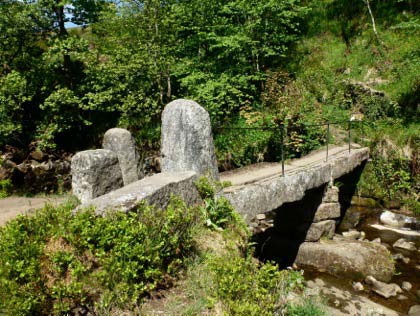Local History Society Report
Journeys between the worlds
Speaker: John Billingsley
Tuesday, 19 January 2021
The paths that we use to explore our landscape carry the marks of those who used them over the centuries, but some were of special significance, to the living and the dead. John Billingsley, local historian and folklorist, told a capacity Zoom webinar for Hebden Bridge Local History Society about the tracks along which the bodies and souls of the dead were taken to their final resting place. John has traced some of these ancestral routes, known as corpseways, which led to the churchyard in Heptonstall.

Some of these old paths can be identified by names on maps though the use of dialect and euphemism can disguise them. Hiding in plain sight was the Course road in Heptonstall which used an old version of corpse – corse. The spelling disguised its origin until the discovery of a document from 1619 that clearly identified it as a corseway. Looking at puzzling place names can offer clues – a Church lane or Kirkgate that are not close to churches suggest their traditional use. There was a strong inclination to keep to these ancestral routes even when more convenient highways were made. Somehow it was more respectful to keep on an old route, away from humdrum everyday life. Also there were superstitions about ghosts that reinforced tradition – some believed that the soul of the dead followed the old route, and deviation might mean they could not rest in peace.
Corpseways tend to have recognisable features – sufficient width for the body to be carried on a bier or stretcher, following a gradient that would not tax the bearers too much, and sometimes flat stones by the way where the body could be rested. Until the 16th century bodies would be carried in sealed canvas shrouds, not heavy coffins, meaning that long journeys over the hills were more practicable. John used maps and photographs to take the audience on a virtual walk along some of the corpseways. One from Cragg Vale over boggy Erringden moor had an alternative bad weather path, where names such as Old Harry Lane and Haven Lane suggest both the nick-name of the devil and of Heaven. Haven Lane offers the first distant view of the church at Heptonstall. Further along is Dole Lane, where gifts might customarily be ‘doled out’ to the funeral party. The route continues through Old Chamber where there are some field names referring to ‘Boggarts’ again possibly maintaining the folk memory of the supernatural potential of a route for the dead. From Hebden Bridge the route was followed up Hangingroyd lane and the Buttress, finally making a little detour at Church lane in Heptonstall to ensure that the body entered the churchyard in a clockwise direction.
The Old Course road named on 19th century maps is the corseway mentioned in a legal document in 1619, demanding that the landowner maintains the route. He was responsible for the stretch from Hebble Hole to Learing Hey. Close to the bridge at Hebble Hole, John speculates that a large flat stone could have been a coffin stone or resting place, the river providing a place of refreshment here. Lily Hall, which stands on the route, also has suggestions of funeral rites in its name, and maybe lilies, the traditional flower of death, were sold here. On this way too there is a stone marked with an overlapping double V – the sign of the Virgin Mary.
Although the bearing of the dead across open country to a resting place in hallowed ground is no longer part of our traditions, superstitions and folk memories are long lasting. It is probably no coincidence that along these routes are stories of ghosts and hauntings into the twentieth century – the painter working on Chantry (or Charnel) house in Heptonstall in the 1960s who was confronted by ghostly feet, or a driver who told of knocking over a dog and its master who then disappeared, another ghostly manifestation on an old corpseway. The shroud itself has fed into our cartoon vision of ghosts as wailing sheets. Stories endure and attach themselves to places of significance to our forebears. Folklore, as John said, focuses on the soul’s final journey, lending these routes a sense of sacredness.
The next Zoom webinar for Hebden Bridge Local History Society on Wednesday 27th January at 7.30 will look at a more recent time: Dr Mary Ellen will speak about the history of social housing in Heptonstall.
Details of the talks programme, publications and of archive opening times are available on the Local History Society website and you can also follow the Facebook page.
With thanks to Sheila Graham for this report
See also

